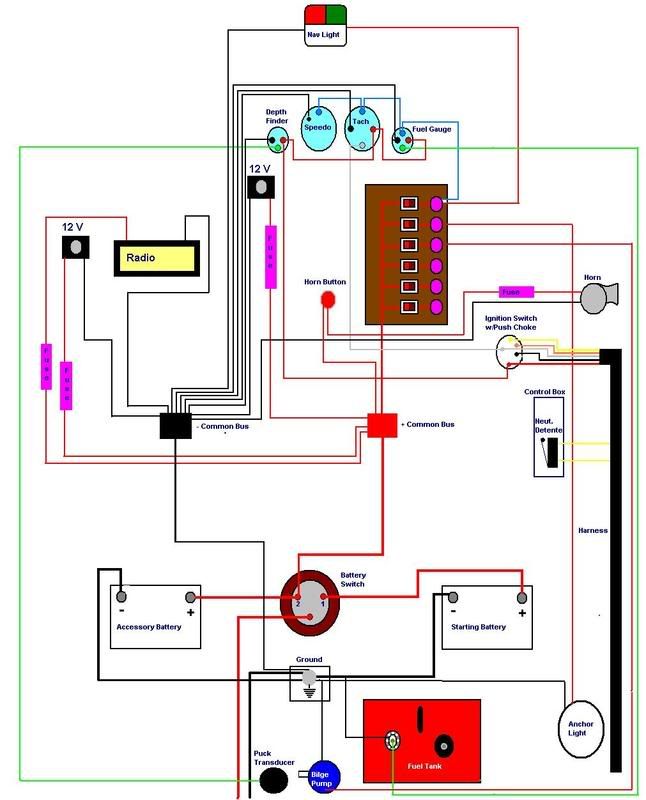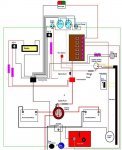A couple of things. The changes are below.
Note; If the boat is going to stay in the water, power the bilge pump directly from the battery. Fuse it at its source, and use an automatic switch with a manual switch override.
Use the proper size fuses and marine grade wire.
Use full size (6 gauge minimum for single outboard eng.) marine battery cable for all your main battery cables positive and negative on both batteries. Do not undersize your accessory battery leads. That way you can start your engine safely with either battery, or both.
The main battery switch selects the battery you want to use and isolates the batteries in case of an electrical fire. In the "off" position it cuts all power.
Put all your loads on the common post of the switch. This includes the battery cable that goes to your engine's starter. The engine should provide voltage back through the starter cable to recharge your batteries and provide power to the ignition and everything else. It is up to you to select which battery you want to use by switching to it after you shut the engine down. You can select "both" to charge them both. When you select "Off" it will isolate all loads from the batteries per. ABYC specs. (note: Never switch to "Off" while the engine is running.)
Switch post 1 = start batt +
Switch post 2 = accessory batt +
Common post = starter cable, common buss + (bilge pump optional)
Here is a good book on the subject.
http://www.iboats.com/12_Volt_Bible_for_Boats_2nd_ed/dm/*******.366734582--category_id.216524--list_time.1206507429--**********.404744443--view_id.11202
This one is good too.
http://www.amazon.com/Marine-Electrical-Electronics-Bible/dp/1574090607






















